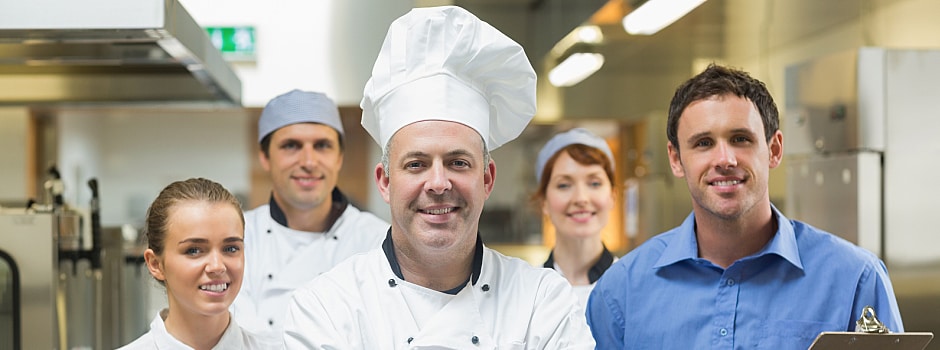Your restaurant uniforms represent a visible part of your establishment's concept and culture, and the outfits you choose can either reinforce your brand or work against it. Just as importantly, comfortable uniforms that fit well can contribute to a happy working environment. If you can, you should involve your cooks and servers in the decision-making process. After all, they'll be the ones wearing the uniforms, so their feedback is useful. Just as importantly, including them in the decision shows that you value them and their opinions. Here are some more helpful tips to guide you when choosing the right uniform for your staff.
Cool and Breathable
The first rule of restaurant uniforms is that they should be cool and breathable. The kitchen is proverbially a hot place, and clothing that helps your cooks stay cool can help them stay productive. Servers and front-of-house staff don't have to cope with the heat of the kitchen, but their comfort is equally important. Visibly hot and uncomfortable servers won't make a good impression, and won't be in the right frame of mind to welcome your diners properly.
Fabric
Chef jackets are traditionally made from heavy cotton or a cotton/polyester blend, which aren't flame-retardant fabrics but do provide a barrier between the heat source and your skin. Pure cotton is highly breathable and helps wick sweat away from your body, but it also wrinkles, stains, and burns. Polyester/cotton blends won't wrinkle or stain as badly, and they don't ignite as readily, but their breathability and comfort are wildly variable. If you opt for a blend, which is definitely the budget-friendlier option, try out a few before committing to your purchase. Uniforms for your servers are also usually blends, and fall within the same range of lightweight fabrics that are used for regular street clothing. If your kitchen staff (or specialized servers, such as baristas) is at risk for splashes of hot liquid, consider using impermeable bib-type aprons at those stations for extra protection.
Cut and Fit
Traditional chef coats are loose and boxy by design, so hot air escapes and cooler air enters with every motion. If you opt for a more modern, fitted style, you'll need to choose a design that compensates for that loss of airflow. Typically, that means incorporating either mesh panels or sewn-in vents to improve ventilation. In the front of the house, opt for shirts and slacks (or skirts) that are fitted enough to look sleek and professional, but can still accommodate servers with various body types.
Color and Style
The color and style you choose should match your restaurant's atmosphere. The traditional monochrome palate of a white top and black pants is still a good option for both cooks and servers—especially if your establishment has a formal tone—but it's not necessarily the default any longer. In a casual restaurant, you might decide that relaxed polo shirts and aprons with pockets for a tablet or smartphone are more your style. Here are a few more tips to follow:
Front vs. Back
In the front of the house, you're likely to find just about any color scheme, so it's a relatively simple matter of choosing tones that suit your decor and theme. In the kitchen, it's a bit more complicated, especially if any part of the kitchen is open and can be viewed. Nothing conveys an image of professionalism like crisp, white jackets, but unfortunately, they won't stay that way until the end of a shift. Keep in mind that black jackets and dark prints conceal food spatters and stains better than white.
Coordinated Appearance
You might also opt to coordinate uniforms between the front and back of the house, creating a unified appearance for your entire staff. This makes a good impression when your kitchen is open to view, but even if you have a closed kitchen, you may want to consider it. You'll have plenty of opportunities for staff photos on social media, and the unspoken message that you're all on the same team can help break down the traditional divide between the front and back of the house.
When choosing a uniform for your staff, make sure to keep these considerations in mind. Not only will your staff look better, but the right gear will help your employees feel comfortable and confident to get the job done well.
Related Articles

4 Tips to Help Your Restaurant Brand Shine
Two things are important in the restaurant business: the food and your restaurant brand. Here are some tips to help you share a consistent brand message.

How to Handle Employee Downtime
Every restaurant experiences employee downtime at one time or another. So what can you do to make sure you're not losing money? Here are some tips.

Good Service is Always On-Trend
Whether you want a beer or a carefully-crafted cocktail, Andrew Volk’s Portland Hunt + Alpine Club is where Portland goes for a good time.
